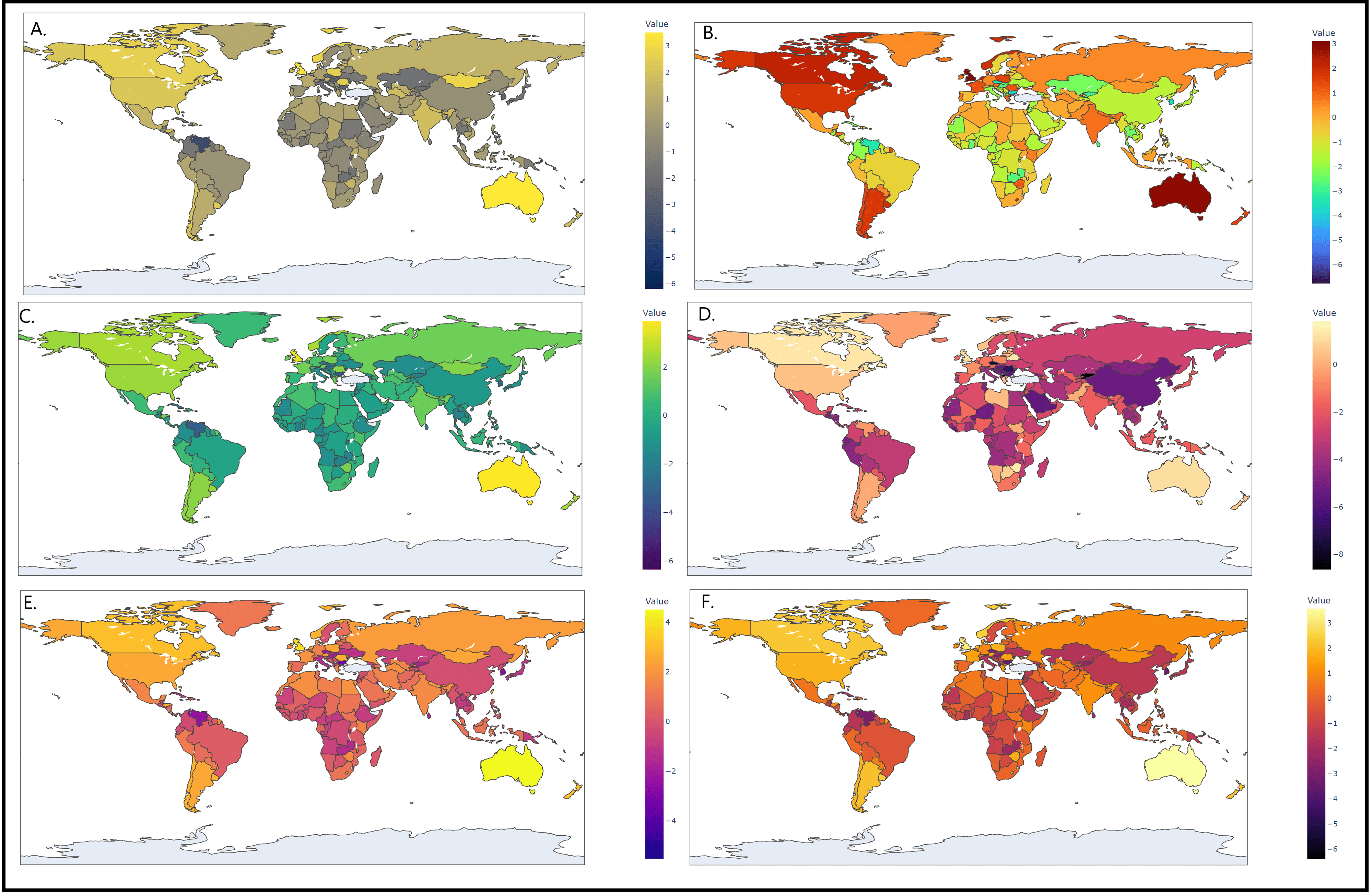Sunday Poster Session
Category: Liver
P1653 - From Male Dominance to Gender Convergence: Global and Regional Trends in Liver Cancer Burden Among Women (1990–2021)
Sunday, October 26, 2025
3:30 PM - 7:00 PM PDT
Location: Exhibit Hall

Hardik Dineshbhai Desai, MBBS (he/him/his)
Independent Researcher
Ahmedabad, Gujarat, India
Presenting Author(s)
Hardik Dineshbhai Desai, MBBS1, Dhruv Gadhiya, MD2, Chethan Raj Gundoji, MBBS3, Gunajan Kochhar, MBBS4, Jay Patel, MBBS5, Jeel Patel, MBBS6, Pragathi Munnangi, MD7, Shivam Kalra, MBBS, MHA8, Nayanika Tummala, MD9, Drumadala I. Gajbhiye, MBBS10
1Independent Researcher, Ahmedabad, Gujarat, India; 2St. Luke's Hospital - Anderson Campus, Easton, PA; 3West Anaheim Medical Center, Anaheim, CA; 4The University Of Oklahoma Health Sciences Center, Oklahoma City, OK; 5MGM Medical College, Aurangabad, Maharashtra, India-431003, Aurangabad, Maharashtra, India; 6Gujarat Adani Institute of Medical Sciences, Bhuj, Gujarat, India; 7BronxCare Health System, New York City, NY; 8Trident Medical Center, North Charleston, SC; 9St. Mary's General Hospital, New York Medical College, Poughkeepsie, NY; 10Government Medical College and Hospital, Philadelphia, PA
Introduction: Liver cancer (LC), historically considered a male-dominant malignancy, has shown concerning trends among women over recent decades. While biological, hormonal, and environmental factors contribute to this shift, comprehensive sex-specific analyses remain limited.
Methods: We analyzed age-, year-, and location-specific estimates of liver cancer burden in women, including mortality modeled by CODEm, non-fatal outcomes by DisMod-MR 2.1, and risk-attributable burden via population attributable fractions, as reported in the Global Burden of Disease Study 2021. Temporal trends in incidence, mortality, DALYs, and YLDs were evaluated using log-linear regression models to derive the annual percentage change (APC) and quantify global and regional shifts over time.
Results: From 1990 to 2021, the total number of LC cases in women doubled, with incidence rising from 75,694 (67,486–85,264) to 164,847 (147,932–181,387), deaths from 76,126 (67,562–86,272) to 159,178 (142,936–175,020), and DALYs from 2.2 million (1.9–2.4) to 3.8 million (3.4–4.1). Regionally, the highest annualized increase in incidence was observed in the Region of the Americas (APC: 3.87%), followed by South-East Asia (3.33%) and the Eastern Mediterranean (2.71%), while Europe (1.95%) and Africa (2.09%) showed more modest trends. Based on World Bank classification, North America recorded the highest rise in DALYs (APC: 4.00%), followed by Latin America & the Caribbean (2.62%) and the Middle East & North Africa (2.32%), with smaller increases in East Asia & Pacific (1.28%) and Europe & Central Asia (1.39%). Age-wise, the burden was greatest among women aged 55+ (DALYs: 2.47%, deaths: 2.77%), moderate in the 20–54 group (DALYs: 1.04%, deaths: 1.15%), and declined in those under 20 (DALYs: –1.61%).
Discussion: Deaths due to LC in women accounted for 3.71% of all cancer related deaths in 2021. The LC burden in women is rising, masked by the overshadowing male predominance in earlier epidemiological reports. The shifting etiological landscape, particularly the rise in NASH and persistent hepatitis infections, demands gender-sensitive prevention, early detection, and treatment strategies. Policy efforts must prioritize equitable access to hepatitis vaccination, lifestyle interventions, and liver health surveillance tailored for women to mitigate this growing public health concern.

Figure: Annual Percentage of Change from 1990-2021, Global Burden of Liver Cancer (LC) in Women, Age-Standardized Rate per 100,000. A: LC due to Alcohol use, B: LC due to Hepatitis B, C: LC due to Hepatitis C, D: Hepatoblastoma, E: LC due to NASH, F: LC due to other causes

Figure: Burden of Liver Cancer in Women in 204 Countries and territories from 1990-2021. A: Trend From 1990-2021 by attributable Risk Factor, B: Age wise Distribution of LC burden in 2021 by cause
Disclosures:
Hardik Dineshbhai Desai indicated no relevant financial relationships.
Dhruv Gadhiya indicated no relevant financial relationships.
Chethan Raj Gundoji indicated no relevant financial relationships.
Gunajan Kochhar indicated no relevant financial relationships.
Jay Patel indicated no relevant financial relationships.
Jeel Patel indicated no relevant financial relationships.
Pragathi Munnangi indicated no relevant financial relationships.
Shivam Kalra indicated no relevant financial relationships.
Nayanika Tummala indicated no relevant financial relationships.
Drumadala Gajbhiye indicated no relevant financial relationships.
Hardik Dineshbhai Desai, MBBS1, Dhruv Gadhiya, MD2, Chethan Raj Gundoji, MBBS3, Gunajan Kochhar, MBBS4, Jay Patel, MBBS5, Jeel Patel, MBBS6, Pragathi Munnangi, MD7, Shivam Kalra, MBBS, MHA8, Nayanika Tummala, MD9, Drumadala I. Gajbhiye, MBBS10. P1653 - From Male Dominance to Gender Convergence: Global and Regional Trends in Liver Cancer Burden Among Women (1990–2021), ACG 2025 Annual Scientific Meeting Abstracts. Phoenix, AZ: American College of Gastroenterology.
1Independent Researcher, Ahmedabad, Gujarat, India; 2St. Luke's Hospital - Anderson Campus, Easton, PA; 3West Anaheim Medical Center, Anaheim, CA; 4The University Of Oklahoma Health Sciences Center, Oklahoma City, OK; 5MGM Medical College, Aurangabad, Maharashtra, India-431003, Aurangabad, Maharashtra, India; 6Gujarat Adani Institute of Medical Sciences, Bhuj, Gujarat, India; 7BronxCare Health System, New York City, NY; 8Trident Medical Center, North Charleston, SC; 9St. Mary's General Hospital, New York Medical College, Poughkeepsie, NY; 10Government Medical College and Hospital, Philadelphia, PA
Introduction: Liver cancer (LC), historically considered a male-dominant malignancy, has shown concerning trends among women over recent decades. While biological, hormonal, and environmental factors contribute to this shift, comprehensive sex-specific analyses remain limited.
Methods: We analyzed age-, year-, and location-specific estimates of liver cancer burden in women, including mortality modeled by CODEm, non-fatal outcomes by DisMod-MR 2.1, and risk-attributable burden via population attributable fractions, as reported in the Global Burden of Disease Study 2021. Temporal trends in incidence, mortality, DALYs, and YLDs were evaluated using log-linear regression models to derive the annual percentage change (APC) and quantify global and regional shifts over time.
Results: From 1990 to 2021, the total number of LC cases in women doubled, with incidence rising from 75,694 (67,486–85,264) to 164,847 (147,932–181,387), deaths from 76,126 (67,562–86,272) to 159,178 (142,936–175,020), and DALYs from 2.2 million (1.9–2.4) to 3.8 million (3.4–4.1). Regionally, the highest annualized increase in incidence was observed in the Region of the Americas (APC: 3.87%), followed by South-East Asia (3.33%) and the Eastern Mediterranean (2.71%), while Europe (1.95%) and Africa (2.09%) showed more modest trends. Based on World Bank classification, North America recorded the highest rise in DALYs (APC: 4.00%), followed by Latin America & the Caribbean (2.62%) and the Middle East & North Africa (2.32%), with smaller increases in East Asia & Pacific (1.28%) and Europe & Central Asia (1.39%). Age-wise, the burden was greatest among women aged 55+ (DALYs: 2.47%, deaths: 2.77%), moderate in the 20–54 group (DALYs: 1.04%, deaths: 1.15%), and declined in those under 20 (DALYs: –1.61%).
Discussion: Deaths due to LC in women accounted for 3.71% of all cancer related deaths in 2021. The LC burden in women is rising, masked by the overshadowing male predominance in earlier epidemiological reports. The shifting etiological landscape, particularly the rise in NASH and persistent hepatitis infections, demands gender-sensitive prevention, early detection, and treatment strategies. Policy efforts must prioritize equitable access to hepatitis vaccination, lifestyle interventions, and liver health surveillance tailored for women to mitigate this growing public health concern.

Figure: Annual Percentage of Change from 1990-2021, Global Burden of Liver Cancer (LC) in Women, Age-Standardized Rate per 100,000. A: LC due to Alcohol use, B: LC due to Hepatitis B, C: LC due to Hepatitis C, D: Hepatoblastoma, E: LC due to NASH, F: LC due to other causes

Figure: Burden of Liver Cancer in Women in 204 Countries and territories from 1990-2021. A: Trend From 1990-2021 by attributable Risk Factor, B: Age wise Distribution of LC burden in 2021 by cause
Disclosures:
Hardik Dineshbhai Desai indicated no relevant financial relationships.
Dhruv Gadhiya indicated no relevant financial relationships.
Chethan Raj Gundoji indicated no relevant financial relationships.
Gunajan Kochhar indicated no relevant financial relationships.
Jay Patel indicated no relevant financial relationships.
Jeel Patel indicated no relevant financial relationships.
Pragathi Munnangi indicated no relevant financial relationships.
Shivam Kalra indicated no relevant financial relationships.
Nayanika Tummala indicated no relevant financial relationships.
Drumadala Gajbhiye indicated no relevant financial relationships.
Hardik Dineshbhai Desai, MBBS1, Dhruv Gadhiya, MD2, Chethan Raj Gundoji, MBBS3, Gunajan Kochhar, MBBS4, Jay Patel, MBBS5, Jeel Patel, MBBS6, Pragathi Munnangi, MD7, Shivam Kalra, MBBS, MHA8, Nayanika Tummala, MD9, Drumadala I. Gajbhiye, MBBS10. P1653 - From Male Dominance to Gender Convergence: Global and Regional Trends in Liver Cancer Burden Among Women (1990–2021), ACG 2025 Annual Scientific Meeting Abstracts. Phoenix, AZ: American College of Gastroenterology.
